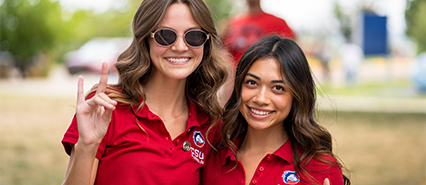Dia De Los Muertos
Día de los Muertos Celebration
Sunday, November 1st: Set up Altars
Monday, November 2nd: Celebración at 12-1:30pm; 6-7:30pm
Tuesday, November 3rd: Take down Altars
Occhiato Student Center Ballroom
Sponsored by: Catholic Campus Ministries, Chicano Studies, M.E.Ch.A., Office of Diversity and Inclusion, English and Foreign Languages, and OSA
Dia de los Muertos
- If your student club, campus organization, or office would like to participate in creating an altar, you MUST reserve a space by emailing the coordinator of Chicano Studies at fawnamber.montoya@csupueblo.edu or calling the Office of Diversity and Inclusion at 719.549.2627.
- Altar set-up begins on Sunday, November 1st at 10 am. Set-up must be completed on November 2nd, no later than 11:30 a.m.
- Please find below the guidelines for a traditional altar, however, you may venture and be creative, as long as you remain respectful of the meaning of an altar; celebrating someone's life.
- You may honor one person or a group of people.
- There will be 2 competitions one for CSU-Pueblo students and the second for community members.
What you need to build a traditional altar
- The most important thing to place on your Day of the Dead altar is a photograph of the person(s) to whom you are dedicating the altar.
- The three tier altar is covered in papel picado - which is bright colored tissue paper with cut out designs. The paper can be either handmade or purchased. Three important colors are purple (for pain) white (for hope) and pink (for the celebration).
- Candles are also placed all over the altar. Purple candles again are used to signify pain. On the top level of the altar, four candles need to be placed - signifying the four cardinal points. The light of the candle will illuminate the way for the dead upon their return.
- Three candy skulls are placed on the second level. These represent the Holy Trinity. On the center of the third level a large skull is placed - this represents the Giver of Life.
All bad spirits must be whisked away and leave a clear path for the dead soul by burning in a bracero, a small burner used to cook outside. Or you can use a sahumerio to burn copal or incense. A small cross of ash is made so that the ghost will expel all its guilt when it is stepped on. - The Day of the Dead bread, pan de muerto, should be accompanied by fruit and candy placed on the altar. Thepan de muerto is plain round sweet bread sprinkled with white sugar and a crisscrossed bone shape on top. Pan de muerto is available in Mexican food stores and bakeries in Pueblo. You can also add the person's favorite food.
- A towel, soap and small bowl are put on the altar so that the returning souls can wash their hands after their long trip. There is a pitcher of fresh water to quench their thirst and a bottle of liquor to remember the good times of their life.
- To decorate and leave a fragrance on the altar, the traditional cempasuchil flower is placed around the other figures. Cempasuchil comes from Nahuatl cempoalxochitl, or the flower with four hundred lives. The flower petals form a path for the spirits to bring them to their banquet.
The following websites will assist you with ideas as you prepare your altars:
https://en.wikipedia.org/wiki/Day_of_the_Dead
http://www.dayofthedead.com/
Altar decorations and materials are the property of those setting up the altar, any damage done to the altar during setup, the celebration, or at take down is the responsibility of the entrants and not the responsibility of the Dia De Los Muertos committee or CSU-Pueblo.


